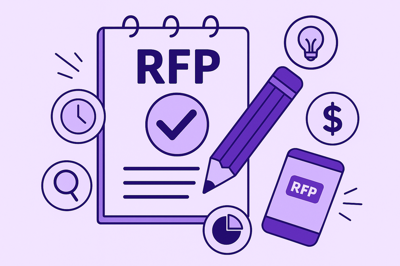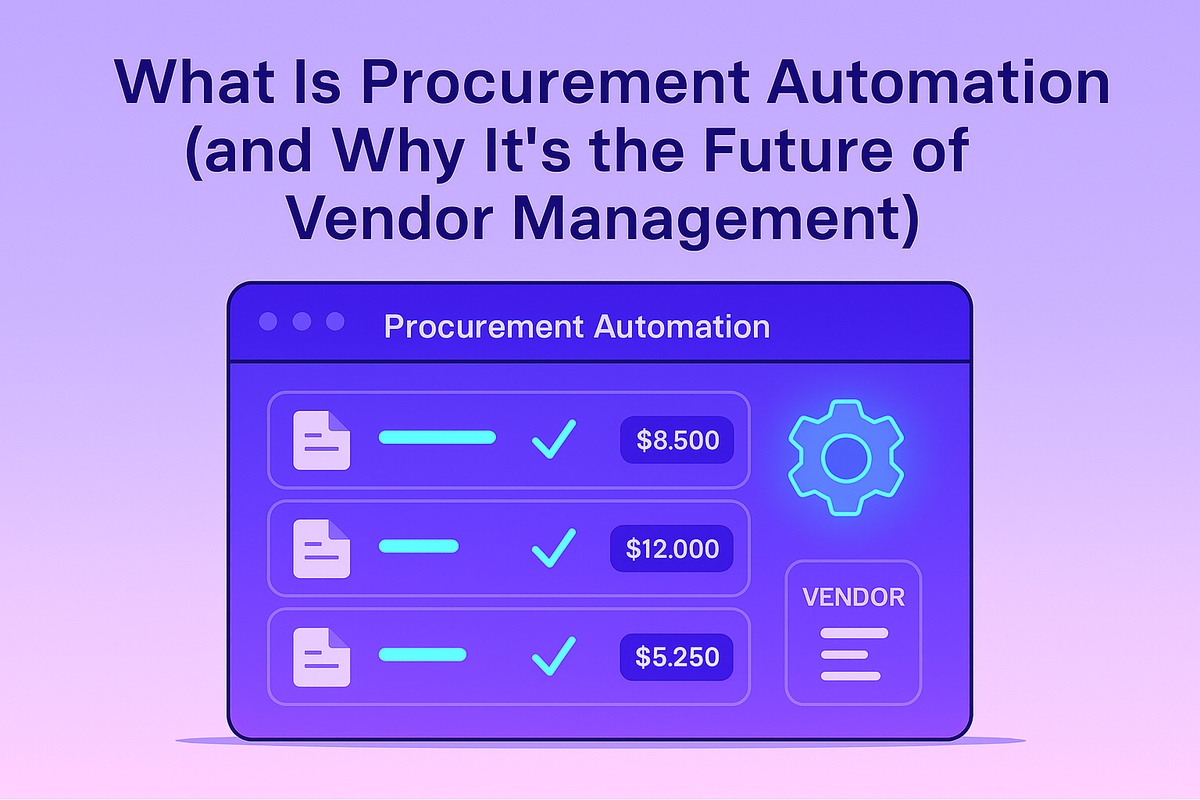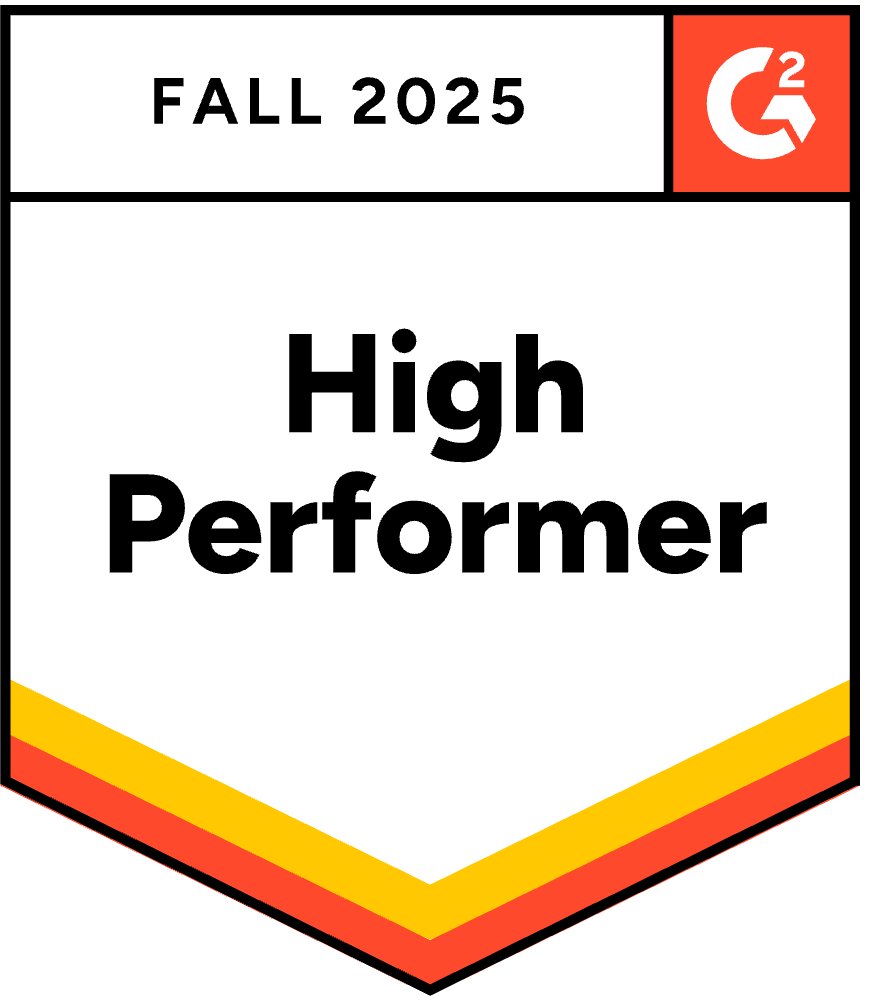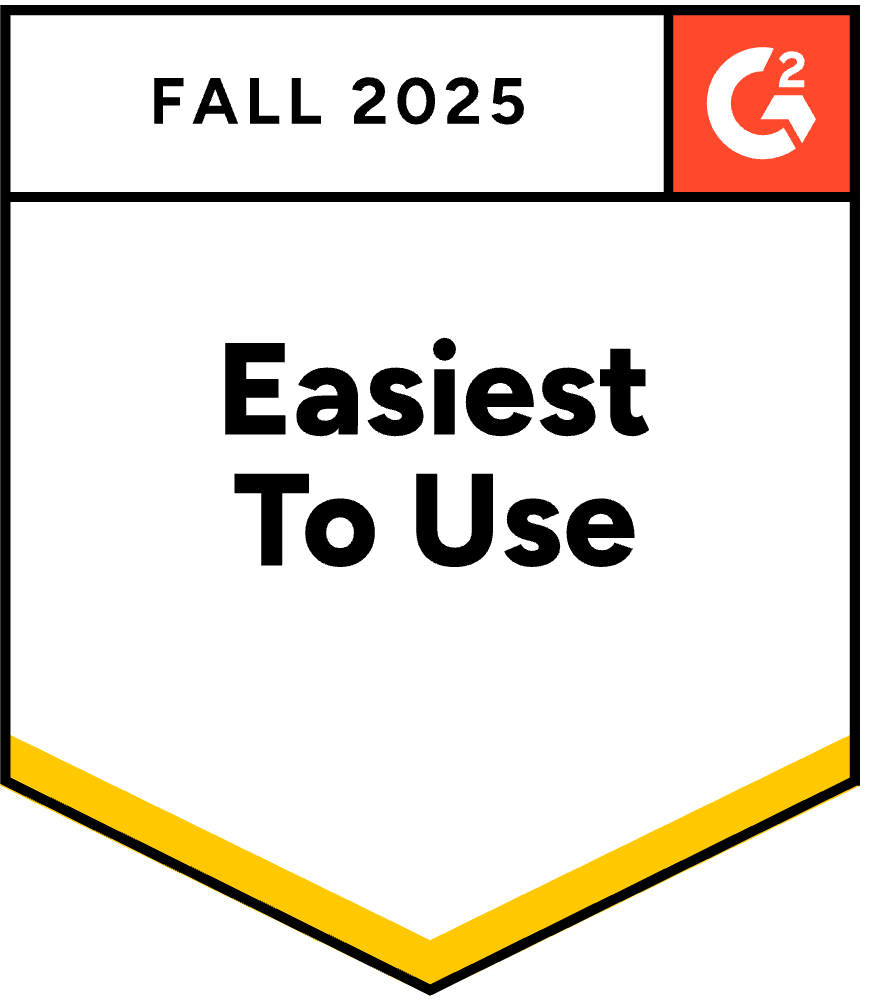How to Write an RFP: A 5-Step Guide for Success
July 22, 2025
By
Evie Secilmis

How to Write an Effective RFP
Your Request for Proposal isn't just another document—it's your company's first impression. It’s your chance to attract the right partners and filter out the wrong ones from the very start. A well-crafted RFP sets the stage for a successful collaboration, inviting proposals from vendors who truly get what you're trying to achieve. Forget just checking boxes. We're going to cover how to write an RFP that acts as a powerful matchmaking tool. Mastering the art of writing an rfp means you'll find a partner who is as invested in your success as you are.
Whether you’re looking to streamline operations, launch a new initiative, or solve a specific challenge, this guide walks you through the RFP writing process with clear, actionable steps—so you can build better outcomes from the start.
So, What Exactly Is an RFP?
A Request for Proposal (RFP) is a formal document that outlines your organization’s requirements and invites vendors to submit proposals. It’s your chance to articulate what you need and why it matters—so vendors can show you how they’ll deliver.
Beyond being a standard part of procurement, RFPs help enforce transparency, keep the process competitive, and ensure that every vendor starts with the same information.
RFP vs. RFI vs. RFQ: Understanding the Difference
Before you start writing, it’s important to make sure you’re using the right tool for the job. The world of procurement is full of acronyms, but the main three you’ll encounter are RFP, RFI, and RFQ. A Request for Proposal (RFP) is what you use when you know the problem you need to solve but are open to different solutions and approaches. In contrast, a Request for Information (RFI) is for educational purposes—you use it to gather information and learn about the vendor landscape. Finally, a Request for Quotation (RFQ) is all about price. You use an RFQ when you know exactly what you want and just need vendors to provide a quote for those specific goods or services.
When Is an RFP the Right Choice?
An RFP is your best bet for complex, strategic projects where the quality of the solution is just as important as the cost. According to the experts at Responsive, you should "use an RFP if your project is important, expensive, or will have a big impact on your organization." It’s the right choice when you have specific questions that require detailed answers and you’re ready to make a purchasing decision. If you’re simply exploring options or gathering general information, an RFI is a better starting point. But when the stakes are high and you need a comprehensive look at how a vendor will partner with you to solve a significant challenge, the structured format of an RFP is essential for making a well-informed choice.
The Three Stages of the RFP Process
A successful RFP outcome depends on a structured and organized approach. Breaking the RFP process down into three distinct stages—Creation, Administration, and Evaluation—helps ensure clarity, fairness, and efficiency. Each stage has its own set of tasks and objectives that build on the last, guiding you from initial planning to final vendor selection. By focusing on one stage at a time, you can prevent oversights and create a process that is both manageable for your team and straightforward for the vendors participating. This methodical approach is the key to attracting high-quality proposals that truly meet your needs.
Stage 1: Creation
The creation stage is where the foundation for the entire process is laid. As one guide puts it, "This is the most important step, involving planning, talking to people, research, and writing. The more effort you put in here, the better the vendor responses will be." This means meeting with internal stakeholders to align on goals, defining the project scope in detail, and establishing clear evaluation criteria before you write a single word of the RFP. A well-defined RFP with specific, unambiguous questions makes it easier for vendors to provide relevant and compelling answers. This clarity not only attracts better-suited partners but also simplifies your team’s evaluation work later on.
Stage 2: Administration
Once your RFP is written, the administration stage begins. This phase is all about logistics: distributing the document to potential vendors, managing communications, and enforcing deadlines. A key part of this stage is handling vendor questions. It’s best practice to set a specific Q&A period and share all questions and answers with every participating vendor to maintain a level playing field. To keep the process manageable, "aim to get proposals from about 3 qualified vendors. Start by inviting a short list of around 6." This ensures you receive a competitive set of proposals without overwhelming your evaluation team with too many responses to review.
Stage 3: Evaluation
The final stage is evaluation, where you review the submitted proposals and select your vendor. "This final step is about reviewing the proposals, comparing them, and picking the best vendor." Your first step should be to ensure each submission is complete and followed all instructions. From there, use the scoring rubric you developed during the creation stage to assess each proposal against your predefined criteria. This objective framework helps remove bias and allows for a fair, side-by-side comparison. Remember, the goal isn’t just to find the lowest price, but to identify the partner offering the best overall value and demonstrating a clear understanding of your project’s goals.
How to Write an RFP in 5 Simple Steps
Step 1: Define Your Project Goals
Start with the “why.” What are you trying to solve, improve, or launch? Clear goals help structure the RFP and inform everything from your timeline to your vendor evaluation criteria.
Detail Your Statement of Work (SOW) and Success Metrics
Your Statement of Work (SOW) is the project's blueprint, and getting it right is essential for attracting proposals that actually meet your needs. This is where you outline everything from specific tasks and deliverables to timelines, milestones, and payment terms. Be explicit about the technical requirements and quality standards you expect. The more detail you provide, the less room there is for misinterpretation down the line. Just as important is defining what a successful outcome looks like. Instead of vague goals, explain exactly how you will measure if the project is a win. This clarity not only helps vendors tailor their solutions accurately but also sets a solid foundation for a successful partnership from day one.
Step 2: Get Your Team on Board
The best RFPs aren’t written in isolation. Loop in the teams who will use the solution or be affected by the outcome—IT, compliance, finance, marketing, etc. Their input leads to a more complete and realistic scope.
Identify Key Stakeholders
Once you’ve agreed to collaborate, map out everyone who has a stake in the project’s outcome. This group often includes the end-users who will interact with the solution daily, department heads who oversee the work, IT specialists who manage technical and security requirements, and finance or executive leaders who approve the budget. Involving these key players from the start is the best way to gather comprehensive project requirements and ensure the RFP reflects the organization's true needs. Getting their input early prevents scope creep down the line and builds internal support, making it easier to implement the chosen solution successfully.
Step 3: Outline Your RFP for Clarity
Make it easy for vendors to follow your process and give you what you need. A solid RFP structure typically includes:
- Introduction: Who you are and what this RFP is about.
- Background Information: A brief overview of your organization, mission, and why this project matters.
- Project Description: Scope, deliverables, and must-haves. The more context you provide, the better the fit you’ll get in responses.
- Submission Guidelines: How and when vendors should submit proposals, and what formats to follow.
- Evaluation Criteria: What matters to you—price, experience, functionality, support, etc.
- Timeline: Dates for release, questions, submission, review, and final selection.
Number Your Requirements for Easy Reference
Here’s a simple formatting tip that makes a huge difference: number your requirements instead of using bullet points. When vendors can refer to "Requirement #17" instead of "the fifth bullet point under the technical section," it eliminates ambiguity and streamlines the entire Q&A process. This small change makes it significantly easier for vendors to structure their responses with precision, ensuring they address every single point you’ve laid out. It’s a win-win: they can create a more organized proposal, and your team can evaluate submissions much more efficiently when comparing answers side-by-side.
Beyond numbering, the content of each requirement needs to be just as clear. Vague requests will only get you vague answers. Be specific about your expectations for performance, quality standards, and any other critical factors that will influence your final decision. When you define your needs with this level of detail, you empower vendors to provide thoughtful, relevant solutions instead of generic sales pitches. This clarity not only improves the quality of the proposals you receive but also sets a clear benchmark for a fair and effective evaluation process.
Step 4: Write with Clarity and Purpose
Skip the buzzwords. Use simple language, break up long paragraphs, and stick to bullet points or numbered lists where possible. This isn’t about dazzling with vocabulary—it’s about clarity and speed.
Be Transparent About Your Budget
It might feel counterintuitive to show your cards, but being upfront about your budget is one of the smartest moves you can make. When vendors know your financial parameters, they can tailor their proposals to offer the most value within your price range. This transparency saves everyone time by filtering out vendors who are a poor financial fit from the start and preventing you from falling in love with a solution you can’t afford. Think of it less as giving away leverage and more as setting a clear, realistic foundation for a potential vendor partnership. It ensures the proposals you receive are practical, relevant, and aligned with your actual resources.
Acknowledge Potential Challenges
Every project has its hurdles. Instead of hiding them, address potential challenges directly in your RFP. Mentioning foreseeable roadblocks—like integrating with a legacy system, working with a non-technical team, or navigating strict compliance requirements—shows that you’ve done your homework. It also gives vendors a chance to demonstrate their problem-solving skills and prove they are true partners, not just order-takers. By being transparent about obstacles, you invite more realistic, thoughtful, and resilient solutions. This approach helps you gauge a vendor’s expertise and adaptability, ensuring you find a partner who is prepared for the reality of your project, not just the ideal version of it.
Ask Specific, Thoughtful Questions
The quality of your proposals depends on the quality of your questions. Avoid overwhelming vendors with hundreds of generic queries. Instead, focus on what truly matters. Use a mix of question types to get the information you need efficiently. Simple “yes/no” questions are great for must-have requirements, allowing you to quickly see if a vendor meets your baseline criteria. For more nuanced areas, use open-ended questions that encourage vendors to explain their approach and showcase their unique value. This strategy not only makes it easier to compare responses but also gives the best vendors a platform to truly shine and differentiate themselves from the competition.
Step 5: Polish and Finalize Your Draft
Don’t rush the send. Have multiple eyes—especially someone outside your core team—review the draft. Look for clarity gaps, unclear instructions, or typos that might confuse vendors or delay responses.
Tips for a Successful RFP Process
Be Transparent from the Start
Vendors appreciate honesty. If you’re prioritizing budget over speed, say so. If internal alignment is slow, flag that. Transparency sets expectations and helps you attract vendors who are aligned—not just available.
Keep Communication Lines Open
Make space for questions. Whether that’s via email or a live Q&A session, encourage vendors to clarify. It helps avoid misinterpretations and strengthens the quality of their proposals.
Create a Fair Process for Vendor Questions
A fair Q&A process is more than just good vendor management—it’s how you get consistent, comparable proposals. To keep things equitable, designate a single point of contact and set a firm deadline for all questions. Instead of replying to vendors individually, collect every question and answer them in a single document. Then, share that Q&A sheet with all participating vendors simultaneously. This approach ensures everyone is working from the same information, which prevents misunderstandings and helps you evaluate proposals on a level playing field. It also signals to vendors that you run a transparent and organized process, which helps attract high-quality partners who value clear communication.
Create a Fair Evaluation Process
Stick to the evaluation criteria you set—and document why decisions were made. This not only keeps your process clean but also builds trust with vendors and stakeholders alike.
Use a Weighted Scoring System for Objectivity
To keep personal bias out of the decision, a weighted scoring system is your best tool. This method forces you and your team to agree on what truly matters before you even open the first proposal. Start by listing your core evaluation criteria—like technical capabilities, pricing, implementation support, and vendor experience. Then, assign a "weight" or percentage to each category based on its importance. For instance, if technical functionality is non-negotiable, it might get 40% of the total score, while pricing gets 25%. This ensures the most critical project requirements have the biggest impact on your final decision.
This approach turns a subjective debate into a data-driven comparison. By creating a clear evaluation matrix, you can have different experts score the sections relevant to their knowledge, which leads to a more accurate assessment. It also makes it much easier to justify your final choice to leadership and provides a transparent, defensible record of the decision-making process. When vendors ask for feedback, you can offer specific, constructive insights instead of vague generalizations, helping you maintain positive relationships even with those you don't select.
Offer Constructive Feedback to All
Take the extra step to give vendors feedback—even if they weren’t selected. It closes the loop, encourages future collaboration, and improves vendor relationships long term.
Ready to Write Your RFP?
An effective RFP does more than just gather proposals—it sparks partnerships, saves time, and builds confidence that you’re moving in the right direction. With clearly defined goals, thoughtful input, and transparent communication, your RFP process can drive real value for your organization.
By following these steps, you’ll not only attract top-tier vendors—you’ll also position your team for a smoother, faster path to selection and success.
Frequently Asked Questions
How long should my RFP document be? There’s no magic number for page count. The right length is whatever it takes to be clear and comprehensive. A highly technical project will naturally require more detail than a straightforward one. Focus on providing enough information for a vendor to submit a thoughtful, accurate proposal without burying them in unnecessary fluff. If a section feels confusing or overly long, ask yourself if there’s a simpler way to explain your needs. Clarity always wins over length.
Is it really a good idea to include our budget in the RFP? Yes, absolutely. While it can feel like you're giving up a negotiating advantage, being transparent about your budget is a strategic move. It immediately filters out vendors who are not a good financial fit and encourages those who are to propose the best possible solution within your means. This saves everyone a significant amount of time and prevents you from getting attached to a proposal you can't afford. It sets a realistic foundation for a partnership from the very beginning.
What's the most common mistake to avoid when writing an RFP? The single biggest mistake is being vague. An RFP filled with unclear goals, undefined scope, and ambiguous questions will only get you generic, unhelpful proposals that are impossible to compare. This issue usually stems from a lack of internal alignment before the writing process begins. Take the time to get all your stakeholders in a room to agree on the project's core objectives and success metrics. A clear and specific RFP is the foundation of a successful outcome.
What should I do if I don't receive any high-quality proposals? A lack of strong proposals is often a sign that there was an issue with the RFP itself, not the vendors. Take it as an opportunity to reassess your document. Were your requirements too restrictive or unrealistic? Was the timeline too aggressive? Did you send it to the right vendors for your project? Gather feedback if possible, refine your RFP with clearer goals and a more defined scope, and consider reissuing it to a revised list of potential partners.
How much detail is too much in the Statement of Work (SOW)? Your SOW needs to be detailed enough to prevent misunderstandings, but not so prescriptive that it stifles a vendor's creativity. You want to clearly define what you need to achieve and why it's important, but leave some room for the vendors—the experts you're hiring—to propose the best way to get there. Focus on outlining deliverables, must-have requirements, and key performance indicators. Avoid dictating the exact methodology unless it's a non-negotiable part of your process.
Key Takeaways
- Do the Homework First: Before writing, align your internal team on the project's core goals and success metrics. A detailed, well-researched RFP acts as a powerful filter, attracting vendors who can actually solve your problem and weeding out those who can't.
- Systemize Your Evaluation: Create a structured process that's easy for vendors to follow and simple for your team to evaluate. Use numbered requirements, a centralized Q&A, and a weighted scoring matrix to remove bias and make a data-driven decision.
- Write for a Partner, Not Just a Price: Share your budget and potential project challenges upfront. This transparency saves everyone time by filtering out poor fits and invites vendors to propose realistic, thoughtful solutions, showing you who is ready to be a true partner.
Related Articles
Share this post
Link copied!



















